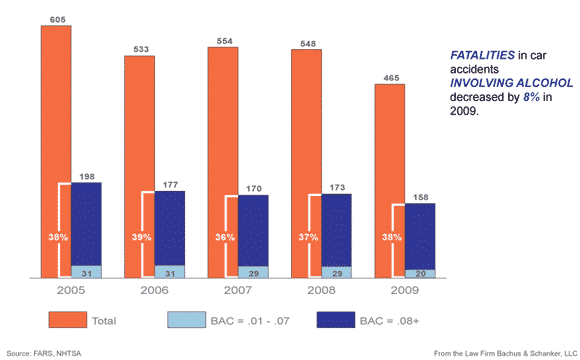Helping Your Teen Safely Navigate Winter Roads
Teenage drivers on icy roads can be a scary thought, especially for parents. Colorado teen auto accidents happen year-round, but ice and slick conditions make fender benders even more likely.
According to the Colorado Department of Transportation (CDOT), drivers under the age of 65 make up the largest number of road fatalities in Colorado—more than other groups like passengers, motorcycles, pedestrians, bicycles, or drivers over the age of 65. In 2016, there have been 560 total fatalities in Colorado so far, with 204 (or 36.4 percent) in the group of drivers under the age of 65.
Of the accidents that had inclement weather conditions from 2005 to 2015, 60 percent were due to snow, sleet, or hail, far outranking other conditions like rain, wind, or fog. Accidents are more common for all drivers during the winter months, but especially teens.
Colorado Teen Auto Accidents Are Common in Winter As teenagers get more confident behind the wheel, their chances of auto accidents may increase. Instead of looking out for poor road conditions and adjusting their driving accordingly, young drivers may feel invincible since they haven’t had a fender bender yet.
Safe winter driving is the opposite of how teens usually drive. Slow, careful navigation is the key—hastily switching between gas and brakes will make your vehicle slide. Here are some other winter driving tips for your teenage driver:
- Clear off your windshield, mirrors, and windows before driving
- Drive slowly and give more following distance from the next vehicle
- Don’t use cruise control when driving on ice
- Always wear a seatbelt
- Turn on your headlights when visibility is low, even if it’s during the daytime
- Avoid braking on curves or while turning
- Don’t slam on your brakes, pump them—unless you have anti-lock braking
- Keep an emergency kit in your vehicle with water, food, blankets, and other supplies
Laws to Protect Your Teen
CDOT has a few laws to improve your car’s traction and reduce its chances of crashing. It’s essential that all Colorado drivers know these, but especially Colorado teens, who are still getting used to maneuvering cars in poor conditions. These laws are not constant, but enacted during extreme weather.
Code 15 – Traction Law
Vehicles need to have snow tires, tires with mud/snow designation, four-wheel drive, or a minimum one-eighth inch tread on the tires. Worn-down tires can also have chains or other traction devices to still abide by the Traction Law.
Code 16 – Passenger Vehicle Chain Law
This law is for severe snowstorms and is the final step before CDOT closes the highways. Every vehicle needs to have chains or another traction device. This code was used in March 2016 due to a massive, record-setting blizzard across the entire area.
Driving with poor tires when Code 15 or 16 are active can result in a fine of more than $130. Blocking the roadway due to defective tires will get you fined up to $650. It’s easy to see why these codes are in place. CDOT reports that one of the worst traffic delays on the I-70 Mountain Corridor was in 2014. Twenty-two vehicles spun out and caused a massive traffic jam; Nineteen of the automobiles had worn tires.
If your teen is headed out on a snowy day, especially to ski, snowboard, or visit snowy mountains, prepare them with the proper gear and a knowledge of how to install chains. Follow CDOT’s updates or the local news stations to find out when a particular code is enacted.
With proper education and tools, your family can safely avoid Colorado teen auto accidents all winter. If your teen does slide and find themselves in a car accident, Bachus & Schanker is skilled at fighting for local families. Contact us today to discover how one of our auto accident lawyers can help you.
Sources
https://www.codot.gov/safety/traffic-safety/data-analysis/fatal-crash-data
https://www.codot.gov/travel/winter-driving/TractionLaw






